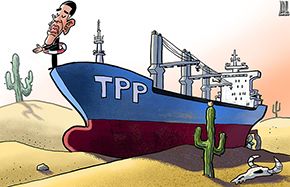A trilateral cooperation of mutual gain
China too has opened up a great deal. For China to open up more effusively on the northern frontiers of Nepal abutting the Tibet autonomous region is not a simple exercise. The issue of Tibet, however, remains sensitive for China and leaves it open to sustained and unreasonable attacks by external forces. The willingness of China to engage in a trilateral project also represents a marked shift in its worldview and overall level of confidence.
Likewise, Nepal is moving away from a foreign policy paradigm that stressed "equidistance" from India and China, an admittedly vague position. A wholesome embrace of a trilateral framework by Nepal, on the other hand, would indicate a desire to bring its two giant neighbors together in the Nepali theater in a transparent and mutually constructive manner. This augurs well for the promotion of stability and growth in the region and perhaps harkens back to the other famous paradigm of Nepali foreign policy, that Nepal should be a "zone of peace".
Let us imagine certain concrete prospects that are likely to arise out of a China-India-Nepal cooperation mechanism. The most prominent, ambitious and promising of these would have to be a railway line connecting the three countries. Given that China and India together account for about 37 percent of the world's population, a train line dissecting the Himalayas would open innumerable economic opportunities, especially in agriculture and tourism, not to talk of cultural exchanges. The impact of this on world history would be nothing short of phenomenal.
Perceptible shifts in geopolitical thinking are emerging in all the three countries that perhaps emanates from a much grander process related to the movement away from a (brief) post-Cold War Pax-Americana to a sort of Metternich balance-of-power era, in which alignments and relationships may be more overlapping and counter-intuitive. But it must be acknowledged that the idea of any trilateral arrangement will surely give rise to reservations on all sides.
For instance, a well-known Indian analyst has expressed fears over cross-border infrastructure, especially railway connectivity. During my recent visit to the Tibet autonomous region, a trade and commerce department official told me that there was tremendous scope for absorption of agricultural products, among other goods, from South Asia in Tibet, as well as in the entire western China from Chongqing municipality to the Xinjiang Uygur autonomous region.
So while security issues are extremely important, serious consideration must be given to how, for example, the Indian provinces of Bihar, Uttar Pradesh, Uttaranchal and West Bengal can be commercially connected with the western part of China through Nepal. Such a possibility is laden with the potential to foster common economic prosperity and overall socio-economic development.
The author is director of Nepal Institute of International and Strategic Studies.
(China Daily 02/16/2013 page5)





















